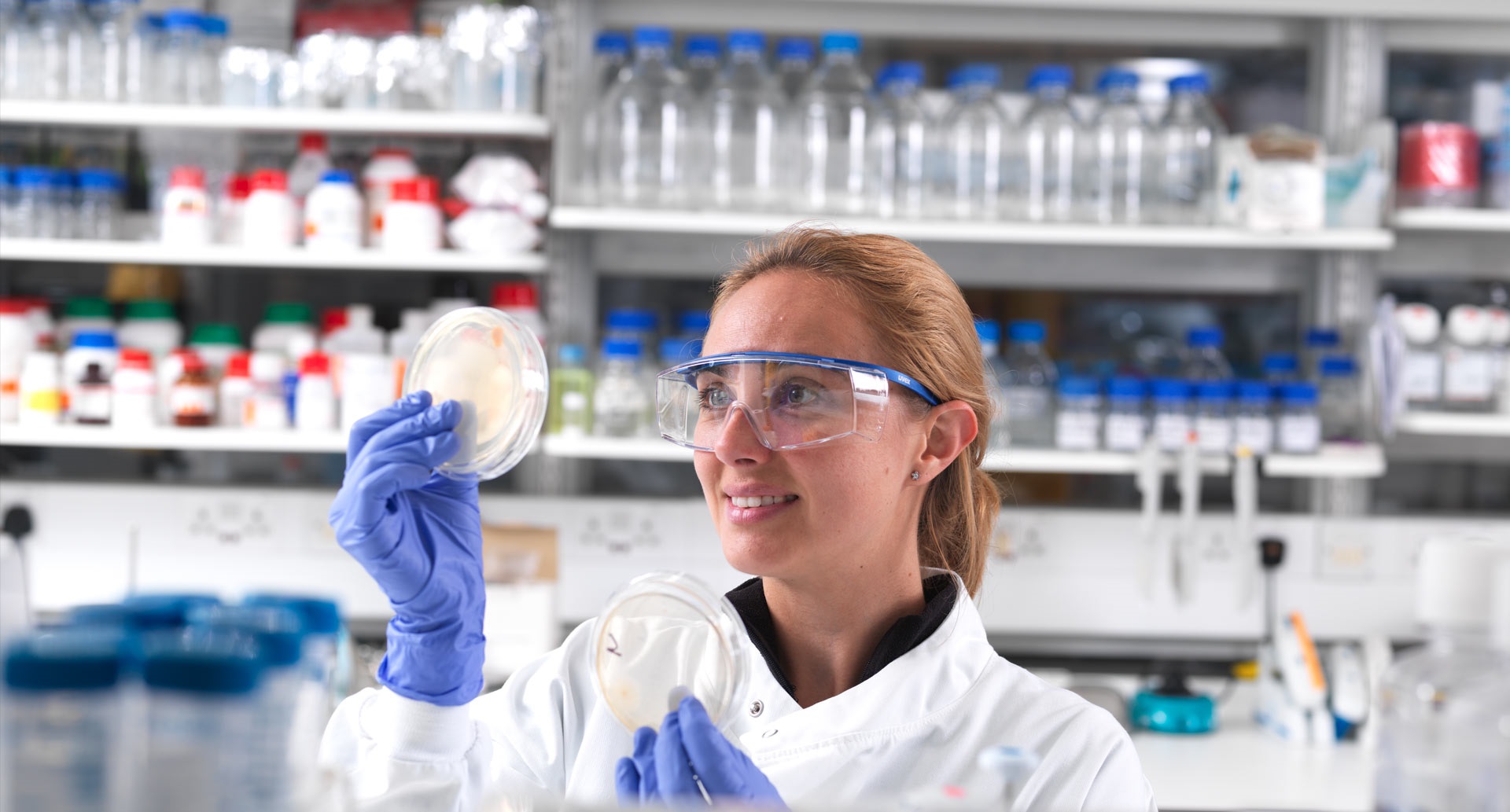Scientists have shown for the first time that some of the most persistent cancer cells in glioblastoma, a common type of adult brain tumour, rely on a specific enzyme for survival and that inhibiting this enzyme leads to the death of the cells.
Furthermore, they have demonstrated that it is possible to reprogram other cancer cells to become dependent on this enzyme – called transforming growth factor beta-activated kinase 1 (TAK1) – which would mean that TAK1 inhibition could destroy more of the tumour and potentially prevent a recurrence of the disease.
This early-stage research provides hope that TAK1 could be an important therapeutic target, not only in glioblastoma but also in other types of cancer.
The study was led by researchers at The Institute of Cancer Research, London, and published in the Nature journal Cell Death & Disease. The work was primarily funded by the Neye Foundation and the Brain Tumour Charity, with additional financial support provided by the Danish Cancer Society, Memorial Sloan Kettering Cancer Center and Cancer Research UK. The Institute of Cancer Research (ICR), which is both an institute and a charity, also contributed to the study’s funding.
Specific challenges in treatment development
Even though glioblastoma is the most common form of primary brain tumour in adults, the treatment options remain limited because the disease is so difficult to treat.
This is partly because the tumours are often detected at a late stage, but there are also various biological factors at play. Firstly, there are typically significant differences – relating to shape, genetics and behaviour – between glioblastoma cells, both across patient populations and within the same tumour. Secondly, the position of the cancer in the brain means that treatments can only reach it if they can penetrate the blood-brain barrier.
These difficulties are compounded by the poor response of glioblastomas to most cancer medications, which tends to result in tumour recurrence. Previous work has attributed this treatment resistance to a persistent subset of cells called glioblastoma stem cells (GSCs), which can be divided into three subtypes. The mesenchymal subtype correlates with the poorest patient outcomes.
Earlier studies have also demonstrated that glioblastoma cells can shift between subtypes and that a transition to a primarily mesenchymal cell state occurs in many of the patients whose disease relapses following treatment. In this new study, the researchers therefore aimed to identify a potential vulnerability in mesenchymal glioblastoma cells that could be exploited therapeutically.
Revealing a selective dependency
The researchers used a method called Clustered Regularly Interspaced Short Palindromic Repeats (CRISPR) screening to look for genes that help cancer cells survive. They adopted an unbiased approach, investigating the effects of inactivating the function of thousands of genes rather than limiting themselves to genes already known to have a role in cancer cell survival.
They discovered that the survival of many GSCs is dependent on the activity of TAK1, which seems to inhibit receptor-interacting protein kinase 1 (RIPK1). When active, RIPK1 associates with a protein complex called the caspase-8/FADD complex to induce cell death. By blocking RIPK1’s activity, TAK1 prolongs the survival of the cancerous cells.
The team was also able to identify a genetic ‘signature’ that could support treatment decisions by revealing which tumours are likely to respond well to drugs that inhibit TAK1. This signature was present in cells with high levels of immune activation, including those with a mesenchymal subtype, and the team successfully used it to predict sensitivity to a known TAK1 inhibitor.
The researchers then took their work a step further, showing that it was possible to reprogram other cancer cells to become dependent on TAK1 function for their survival. They did this by treating the cells with specific cytokines – substances made by immune cells – to mimic an immune-cell rich environment. This reprogramming serves to make a larger number of cells sensitive to treatment with TAK1 inhibitors.
“Half of all glioma patients might benefit”
First author Dr Helene Damhofer, who was a staff scientist at the ICR at the time of the study and is now a senior scientist at BiOrigin in Copenhagen, said:
“This innovative work has provided a link that was not known before. By discovering that a subset of glioma cells with a high level of immune activation is dependent on TAK1, we have provided insight into the mechanism by which TAK1 inhibition induces cell death in the glioma cells. Excitingly, this also gives us a means by which to stratify patients, as we can predict those who will likely benefit from TAK1 inhibition.”
Senior author Professor Kristian Helin, CEO of the ICR and Group Leader of the Epigenetics and Cancer Group in the ICR’s Division of Cancer Biology, said:
“We are pleased to be the first to show that several cancer types are inherently dependent on the function of the kinase TAK1 to suppress cell death. The findings of our study suggest that half of all glioma patients might benefit from TAK1-targeting therapy.
“What’s even better is that the mechanisms of TAK1 dependency that we’ve uncovered are not limited to glioma cells. We had not anticipated that these mechanisms would be preserved against so many cancer types, but it means that many more people with cancer might benefit from treatments that inhibit TAK1 in the future.”
The team is optimistic that this study is just the first step towards effective new cancer treatments. Dr Damhofer said:
“We hope our work inspires other cancer researchers to test TAK1-targeted therapies in their model systems and find optimal combination therapies. Moreover, we hope it will inspire biotech and pharma companies to develop TAK1 inhibitors that can penetrate the blood-brain barrier. Ultimately, we believe that a TAK1 inhibitor could enhance treatment options for patients with glioblastoma or other tumours showing an immune-activated gene expression signature.”
